Belarusian Manor and Park Complexes Post-1991: Flourishing or Fading?
The fate of manor and park complexes in post-Soviet Belarus is quite different: some flourish, while others fade. But what are the decisive factors behind that? What funds were used to finance the restoration and renovation of these complexes, and what has been the impact? How does privatization affect manor and park complexes, and what new threats do they face? This article provides analysis with numerous examples and illustrations.
Belarusian manor and park complexes are an essential element of the country’s cultural heritage. They possess significant potential as tourist attractions, embody our rich history, and many of them hold considerable memorial significance. But how did their fate unfold after Belarus gained independence?
Intuitively, one might assume that the Soviet government, which viewed manors as ideologically antagonistic and obsolete, would destroy or repurpose these complexes, whereas in independent Belarus, they would be restored, renovated, and thrive. In case the state were unable to manage it, private investors would come to the rescue with investment projects. However, a review of the manor and park complexes in Belarus after 1991 revealed that the processes they underwent were neither straightforward nor consistently positive.



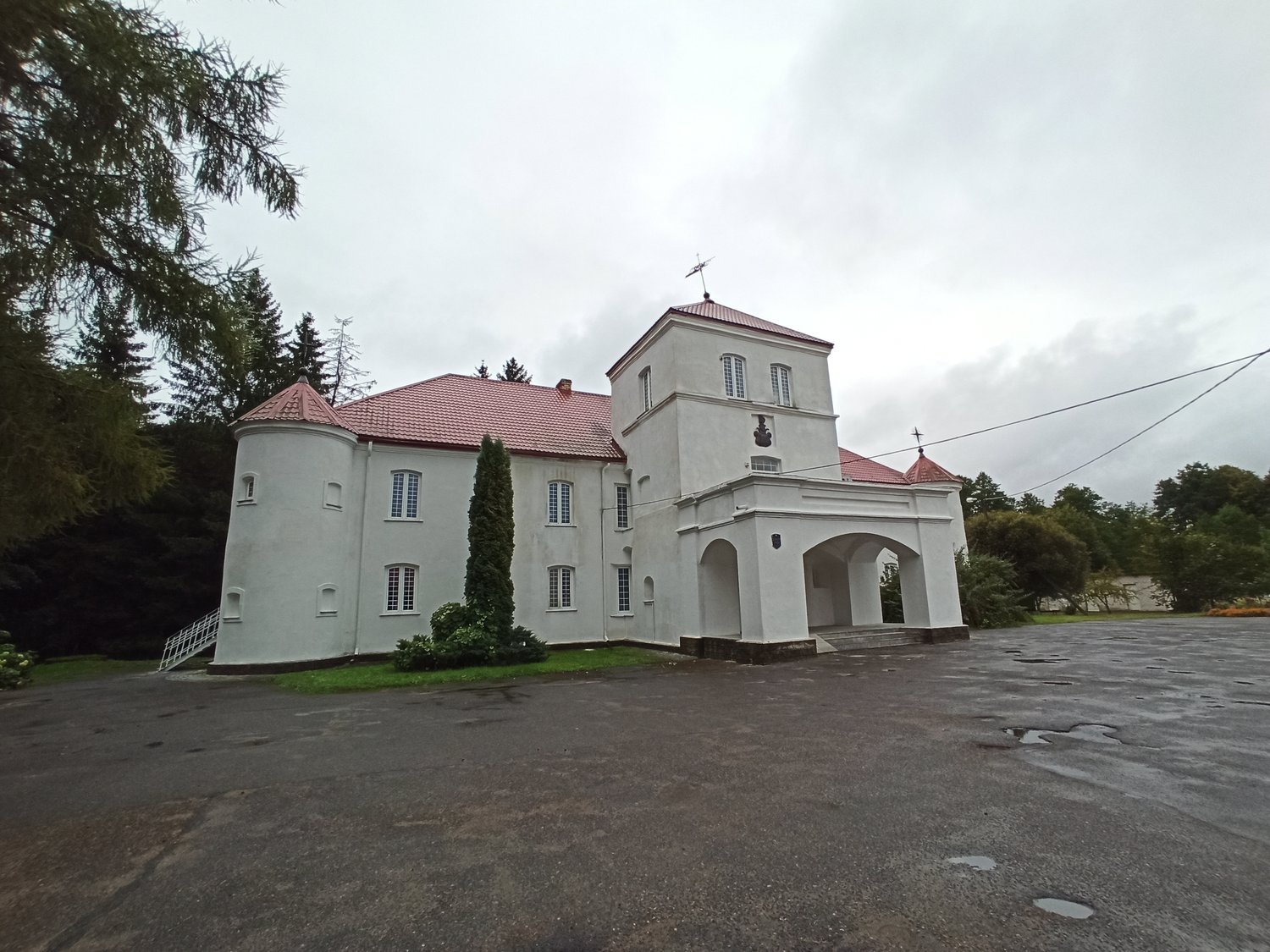
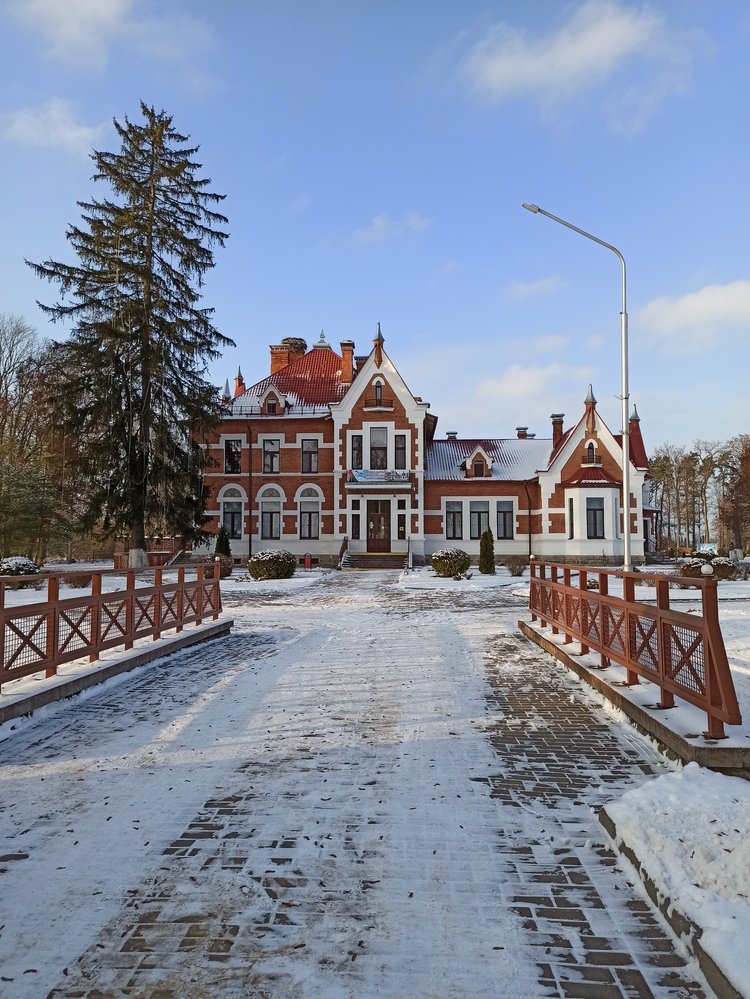
The Manor and Park Complex Phenomenon
Manor and park complexes are a kind of cultural landscape, where monuments of manor architecture and landscape gardening combine. They may include household, fortification, religious buildings, as well as be of memorial or historical value.
In Belarusian lands, already in the Middle Ages, one could easily tell the homes of the privileged from those of ordinary people. Manors of the prince and his retinue differed even in building materials. Princely manors were built of brick and stone and had several tiers, large windows, and rich decor. Remains of one of these princely palaces were studied by archaeologists in Hrodna. Over time, the elite initially occupied the best urban areas, but then began to prefer suburban locations for their residences.
Starting from the XVI century, privately owned castles began to appear, and entails took shape. Gradually, the manors of magnates and nobility turned into administrative, economic and cultural centers of regions. To meet the needs of manor owners, works of fine and decorative art and pieces of furniture were commissioned. Manors accumulated extensive library and archival collections, as well as valuable museum artifacts.
In the XVI century, the first gardens, mainly fruit ones, appeared next to the manors. As time went on, decorative gardens were established as well, sparking the development of landscape gardening.
In the XVII-XVIII centuries, the defensive function of manor and park complexes increasingly gave way to the representative one. Let us recall the large manors that belonged to magnates: Radziwills in Niasvizh, Sapiehas in Ruzhany, Khreptovichy in Shchorsy, etc. The partitions of the Polish-Lithuanian Commonwealth (1772, 1793, 1795) and the resulting annexation of the Belarusian lands to the Russian Empire opened a new chapter for manor and park complexes. Representatives of the Russian elite began to build their residences on Belarusian lands. This is how the palaces of the Rumyantsevs and Paskevichs in Homiel, the Potemkins and Golynskys in Krychau, the Tolstoys in the village of Hrudzinauka (Bykhau rayon), and of the Romanovs near Barysau emerged. In late XVIII — first half of the XIX centuries, palaces gave way to less ambitious manors.
During the Russian Empire, nobility manors were a challenging and problematic environment for the central government. Local elites formed the social basis for anti-Tsarist protests. Nobility manors with their economic potential became support hubs for rebel groups. Manor owners were well-educated and, in some cases, established secret schools that promoted patriotic education different from the state’s perspective. This did not only influence the strengthening of «Polishness», but also the formation of Belarusianness. One of these schools predetermined the fate of Anton Liavitsky, which he mentions in his «Letters from the Road».
Throughout its history, Belarusian architecture has evolved and experienced the shifts of all European styles: Renaissance, Baroque, classicism, historicism, eclecticism, Art Nouveau. Before the XX century, manor and park complexes had been a motley mosaic of various architectural styles.
In the XX century they were devastated by two world wars, revolution, confiscation, repurposing and mere abandonment. A whole layer of culture and its bearers, representatives of the privileged class, was irretrievably lost.
The Soviet government rejected noble culture and lifestyle, leading to the repurposing of manor and park complexes. With the rare exception of Homiel, where the palace housed a museum, manors were taken over by completely new owners. These could be schools (the Makrytsky manor in the village of Vysokaye, Orsha rayon), hospitals (the Butaut-Andreikavich manor in the village of Parozava, Svislach rayon), recreation facilities (the Radziwill Palace in Niasvizh, Niasvizh rayon), collective farm management (the Bogush-Shishkou manor in Trokeniki, Astravets rayon), factories and production enterprises (the Charnotsky manor «Nacha Bryndzouskaya», Lyakhavichi rayon), prisons (the Khaletsky manor in the village of Halch, Vetka rayon), military facilities (the Rdultousky Palace in the village of Snou, Niasvizh rayon), etc.

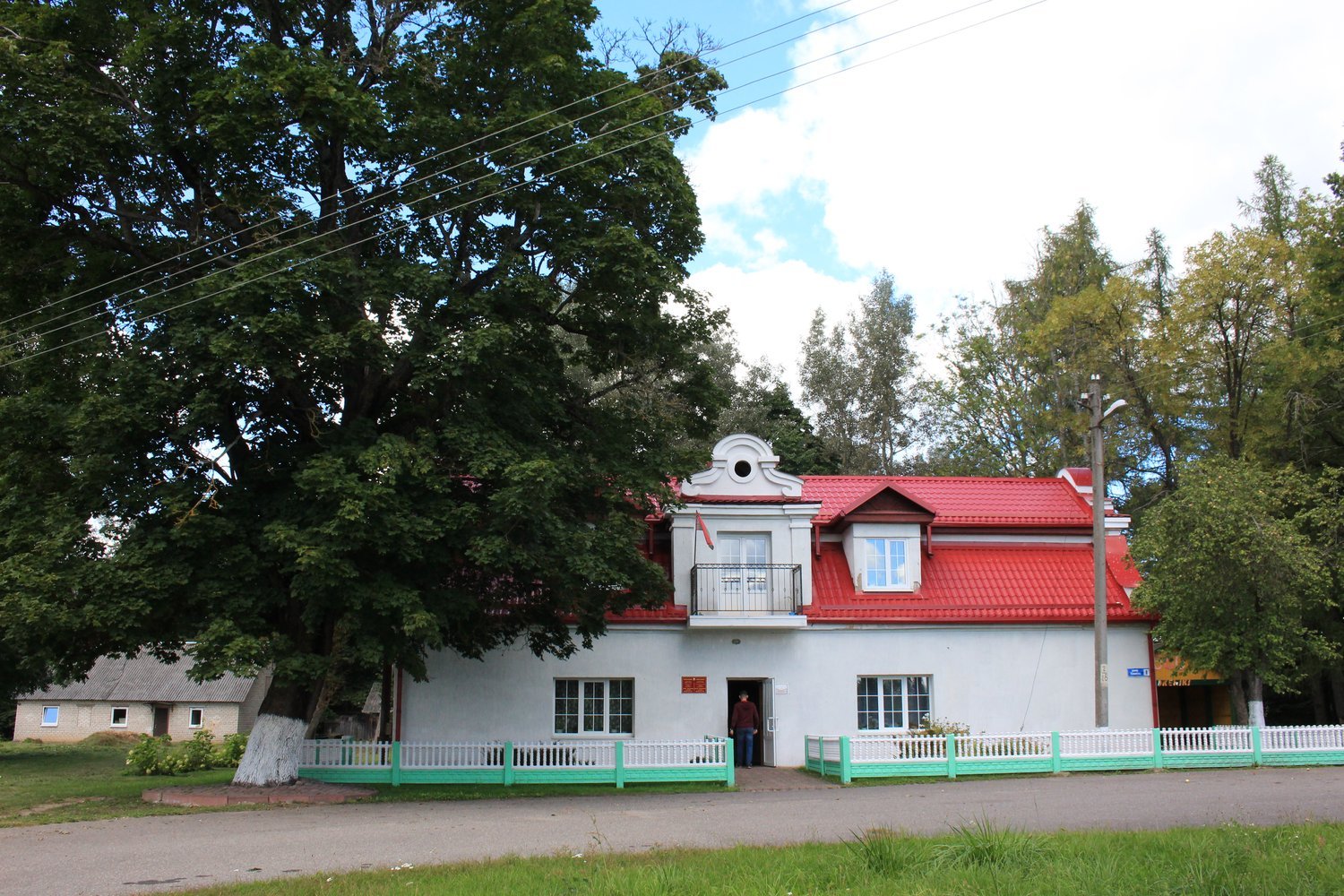
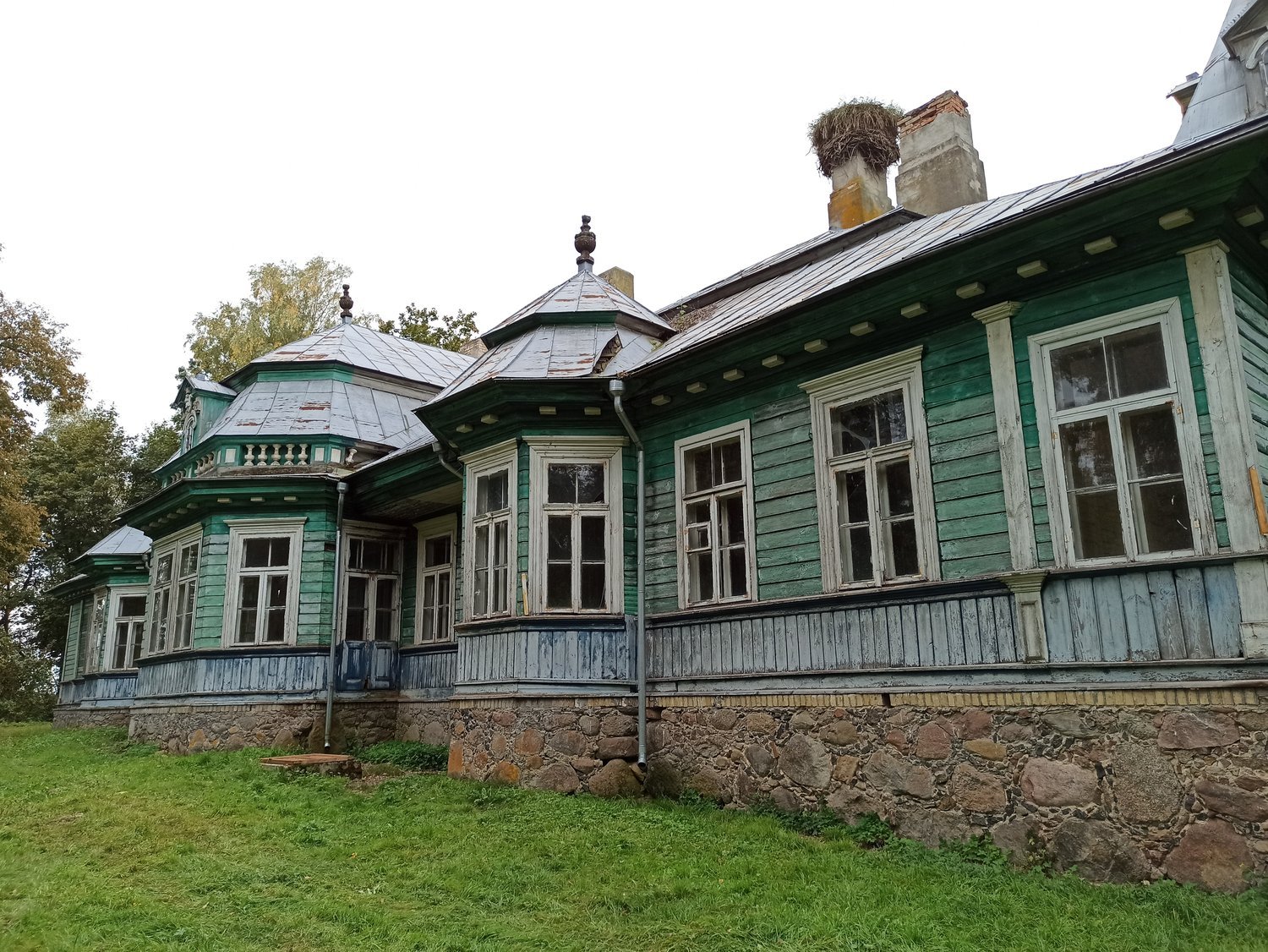
It might have seemed that after Belarus gained independence, manor and park complexes would be restored and revitalized, but the reality was quite different.
Noteworthy Restoration Projects
In the early 1990s, the interest in national history, culture, and the heritage of the privileged classes surged. There was also a growing understanding that manor and park complexes required conservation, restoration and reconstruction. In 1992, the first museum exposition was opened in the Southwestern Tower of the Mir Castle, and in 1993 the «Niasvizh» National Historical and Cultural Museum-Reserve was established. However, restoration of manor and park complexes stretched over decades.
Furthermore, their restoration triggered acute discussions in professional circles. Mistakes and successes of restorers, approaches to project implementation, work priorities, and the functional purpose of restored sites generated numerous publications and discussions at various levels.
Yields of restoration efforts became visible only in the new millennium. The table below shows the years of completion of restoration work or commissioning of the first stage of some manor and park complexes in Belarus.
Before 2020 restoration of Belarusian manor and park complexes was financed not only from the national budget, but also with international financial support. Furthermore, in some cases the volume of this support significantly exceeded the contribution of the Belarusian state. Thus, under the project «Restoration of Common Cultural Heritage as a Basis for Developing Cross-Border Cooperation between Youth and Creative Teams of Poland and Belarus,» implemented simultaneously in the Lyakhavichi rayon and the Polish gmina of Pukhachev, the European Union allocated 1.1375 million euros for the restoration of the Reitan manor in Hrushauka (Lyakhavichi rayon), while the local budget contributed only 140 thousand euros.



Changes in foreign policy after the 2020 elections, sanctions pressure, and the near disappearance of Belarus from European tourist routes have negatively affected the prospects for further restoration of such heritage. While it is highly probable that ongoing projects will be fully funded and completed sooner or later, implementation of new initiatives is open to question. Reasons behind this are not limited to the lack of international cooperation and funding.
Similarly to the Soviet government, the modern Belarusian authorities begin to perceive the legacy of manor and park complexes as antagonistic. The historical heritage of the Polish-Lithuanian Commonwealth becomes unnecessary, since this period itself, as viewed by state ideology, was Polish. Activists of the XIX century national liberation movement, participants of uprisings, as well as supporters of anti-Russian policies become unwanted, meaning that restoration of manor and park complexes that belonged to them will, at best, be postponed.
At the same time, the legacy of the Russian Empire is being revived, often in unexpected forms. Thus, in 2023, the restoration of the Ramanau family manor and park complex in Stara-Barysau (Barysau rayon) was announced, with the aim of opening a rehabilitation center for children taken from Donbass. Although the manor had been bought by private investors, according to Aliaksei Talai, who launched the project, the owners donated the building and the project will be financed within the framework of the programs of the Union State of Belarus and Russia. It can be assumed that in the coming years, similar projects will be prioritised.
The New Life of Manors: Preservation Through Functionality
Not all manor and park complexes require extensive restoration or conversion into museums. Some of the complexes, those that retained a functional purpose after 1991, are in relatively good condition or have been renovated by the institutions currently occupying them.
For example, the Huten-Chapsky manor and park complex in the village of Priluki (Miensk rayon) is occupied by the «Belarusian Scientific Research Institute of Plant Protection» republican scientific subsidiary unitary enterprise. The institution keeps the manor house and surrounding grounds in good condition. A small museum within the manor building is also open to visitors, but prior reservation is required. On the contrary, unused outbuildings of the manor complex look much worse, the area around them is not landscaped.
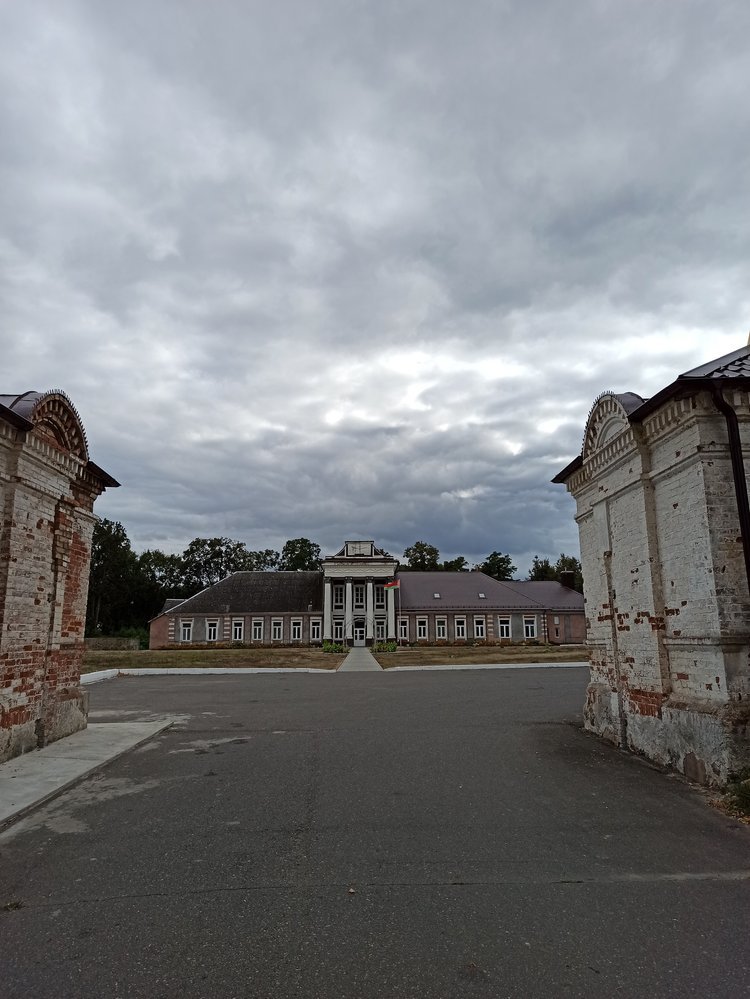
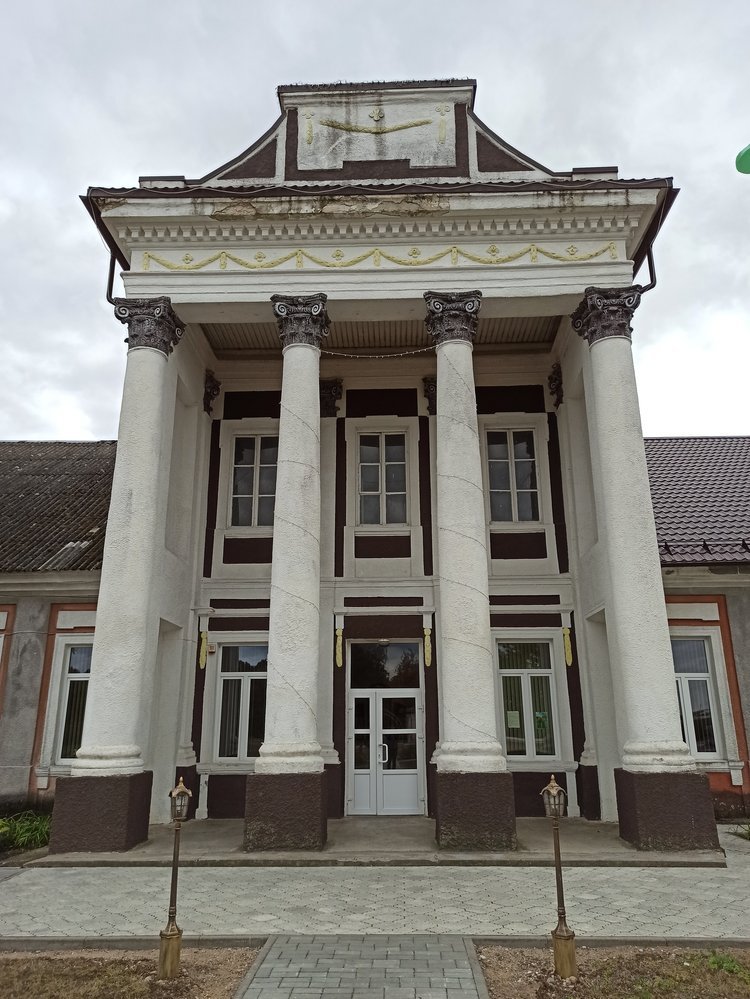


An interesting example is the restoration of the Sukhadolsky manor in the village of Vialikaya Rahoznitsa (Masty rayon). Restoration of the manor house and entrance gates was funded by the municipal agricultural unitary enterprise n. a. Adam Mitskievich. The manor and park complex houses its administration. The enterprise intends to restore the outbuildings and parkland.
The territory of the Romer manor in the village of Mazheikava (Lida rayon) is also well-maintained. The manor house hosts the Mazheikausky Rural Executive Committee, Rural Council of Deputies and a library.
If a manor is occupied by cultural institutions, its chances of being preserved and included in a tourist offering increase significantly. In this case, it becomes possible to see the interiors, as well as receive guided tours or consultations from the institution’s staff. The Putkamer manor in the village of Baltseniki (Voranava rayon) is another positive example. A branch of the Baltseniky Cultural and Tourist Center operated by the «Voranava Rayon Center of Culture and Folk Art» state cultural institution functions in the manor. The institution takes good care of the manor house and the parkland. During working hours, visitors can explore the manor interiors, with guided tours of the manor house available for organized groups.
A similar positive experience is demonstrated by the branch of the Trakenitskaya Rural Library-Club of the Astravetsky Rayon Library, which is located in the Bogush-Shishki manor house (Trakeniki village, Astravets rayon). During the library’s working hours, one can discover the manor house interiors, view museum exhibits showcasing the local ethnographic heritage, and learn about the life and creative journey of the artist Marianna Bogush-Shishka.
In some manor and park complexes, institutions from the Ministry of Health system are still in operation. On the one hand, they maintain the territory of the manors and the buildings themselves in proper condition, while on the other, they have specific rules and visiting hours. A positive example is the Norhart fortress in the village of Haitsiunishki (Voranausky rayon), which accommodates the administrative building of the Republican Psychiatric Hospital. Despite the facility being restricted, it is open to tourist groups. Similarly, the Akhranousky manor in the village of Lushchyki (Miadziel rayon) and the Liubamirsky manor in the village of Yurtsava (Orsha rayon), occupied by medical institutions, can be accessed on working days.
At the same time, the well-preserved Ivanousky manor in the village of Halavichpole, currently used by a boarding house, can be viewed only along its perimeter.
Desolation and Degradation
Some manor and park complexes that survived the upheavals of the XX century and were used for various purposes began to deteriorate and fall into disrepair during the period of independence. We believe that the main reason behind this is the fact that they lost their functions. Occupied by schools, hospitals, libraries, cultural centers, or shops, the manors enjoyed certain demand from the local community. As a result, they were maintained without a scientific approach, but in a condition that ensured their functionality and preservation.
Changes in socio-economic development, urbanization, and the state’s reduction of social services for rural areas (such as the closure of libraries, clubs, schools, and hospitals) have negatively impacted the condition of manor and park complexes in Belarus.
Manors that lost their function and were abandoned began to deteriorate rapidly and were subject to looting. The once attractive plots with noteworthy pieces of landscape art and captivating architecture turned into weedy, clogged, and utterly dangerous areas.
During the sovereign period, the Pliavaki manor house in the town of Ivianets (Valozhyn rayon) was completely destroyed by fire. In 2012, the O’Rourke manor in Usialiub (Navahradak rayon) was completely ravaged by fire. That same year, the roof of the Umiastousky manor in Zhamyslaul (Ivie rayon) burned down. In 2020, the roof of the Harting manor in Snou (Niasvizh rayon) also suffered from a fire. The list of manors that were simply abandoned and looted in the meantime would be more than a page long.
It is worth noting that manors can be found in an abandoned state not only in remote rural areas but also in regional centres. For example, the abandoned Dariya-Dziernalovich manor and park complex in the rayon center of Karma. The manor house belongs to the Department of Education, Sports and Tourism of the Karma Rayon Executive Committee, and has been partially mothballed. Several window openings are covered with wooden and slate shields, some of the windows on the second floor lack glazing. Fragments of plaster were lost, while its roof was overgrown with trees and damaged.
The Charnyshou-Kruhlikau manor in the rayon center of Chachersk has been put into mothballs and abandoned. It was only in 2022 that the Radziwill Palace in the Dziatlava rayon centre, which had been unused for the previous 10 years, was sold. The Hlazko manor in Rassony (Rassony rayon), an intriguing architectural monument from the early XX century, is currently for sale and not in use.
On top of abandonment and decline due to disuse, manor and park complexes are faced with another threat, which is demolition authorised by the government. Its desire to put things in order often leads to combating so-called mismanagement, which typically involves demolishing old, neglected village and manor houses. Oftentimes the desire to perfect the local landscape results in the destruction of architectural monuments. To illustrate, in 2010, the wooden building of the Bokhvitz manor in the village of Uradzhainaya (Lyakhavichi rayon) was dismantled for firewood, and not so long ago the Arlitsky manor in the village of Dvor-Homiel (Polatsk rayon) was demolished.
More information is available here.
Not only wooden buildings, but also stone manors are being destroyed. Thus, the Khlyustiny manor house in Arekhausk (Orsha rayon) was brought down. This was probably done before 2021.
Another trend in refining the cultural landscape of manor and park complexes is the demolition of outbuildings. This way, the outbuildings of the Abukhovich manor in the village of Vialikaya Lipa (Niasvizh rayon) were bulldozed. Obviously, this happened after September 2022, as priorly the brewery and the wooden barn had been in place.
This episode was covered in independent media; however, such coverage is rather an exception. Elimination of independent media, especially regional ones, has created an information vacuum around the issue of heritage preservation. Absence of information and public organisations capable of influencing local and national authorities on matters of conservation and development of manor and park complexes has effectively granted carte blanche for the destruction and redevelopment of these monuments.
Manor and park complexes and their fragments, which are not on the State List of Historical and Cultural Values of the Republic of Belarus (further on — the State Register), are especially vulnerable. Efforts to include them in the State Register are progressing very slowly, and particularly hesitantly when the site proposed for inclusion is in poor condition. In 2014, it included 173 sites representing the country’s manor and park heritage. However, as calculated by the famous researcher of landscape gardening and Belarusian manor and park complexes A. T. Fiedaruk, there are over a thousand such sites in the Berastsie, Miensk and Hrodna voblasts alone. The «Manors of the Vitebsk Area» companion prepared by M. V. Pivavar in 2020, contains information about 287 manors in the Vitsebsk voblast alone.
It is almost impossible to think, but in 2023, only the well-preserved Bonch-Asmalousky manor in the agricultural town of Blon was included in the State Register. Neither the local authorities nor the staff of the museum located in the manor were interested in being listed in the latter. Inclusion of the manor in the register became possible thanks to public initiative.
It might also seem that sites which have lost their function and are no longer valued by the local community could be saved by a private investor. But even this path turned out to be rocky and complex in independent Belarus.
Are Manors Better Off Privatized?
The Republic of Belarus did not pursue the restitution of property to its previous owners, unlike the approach taken in the Baltic States. Over time, the idea emerged to sell or even transfer manor and park complexes to private ownership at no cost. This would allow to replenish local budgets and get rid of facilities, most often problematic, which required significant investments.
In 2009, the «Action Plan for the Transfer of Unused Manors Located in Rural Areas to Agroecotourism Enterprises» was approved. The plan identified 46 manor and park complexes, which were supposed to be transferred to private ownership. A year later, the plan was supplemented with same name recommendations, which were posted on numerous rayon executive committee websites. Some manors did become private property, but this did not always result in an improvement in their condition.
According to all legal norms, restoration of a manor and park complex differs significantly from simple repair. Developing project documentation, recruiting qualified specialists, and researching historical sources all require significant investment and take considerable time. Not every investor understood these peculiarities when purchasing the manor.
For example, the Pliater manor and park complex in the village of Opsa (Braslau rayon) became private property in 2012. An ambitious project for a 52-bed hotel and entertainment complex was developed. In 2016, it was among the 14 best new projects in the Baltic States and won the Baltic Prix d’Excellence competition in the «Heritage: Recreation Area» category. However, the project was never implemented. The territory of the manor is unkempt, the building is partially mothballed.


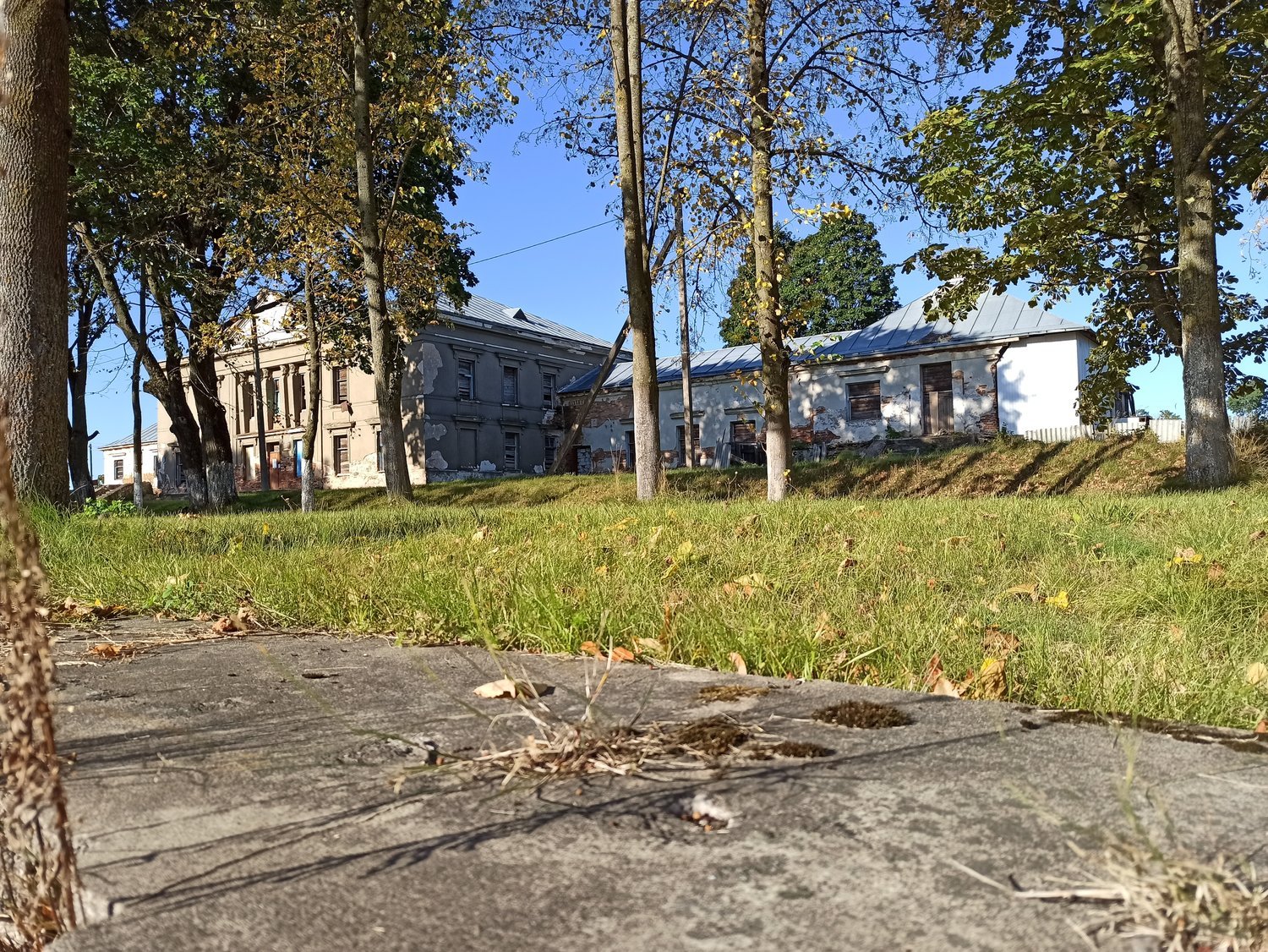
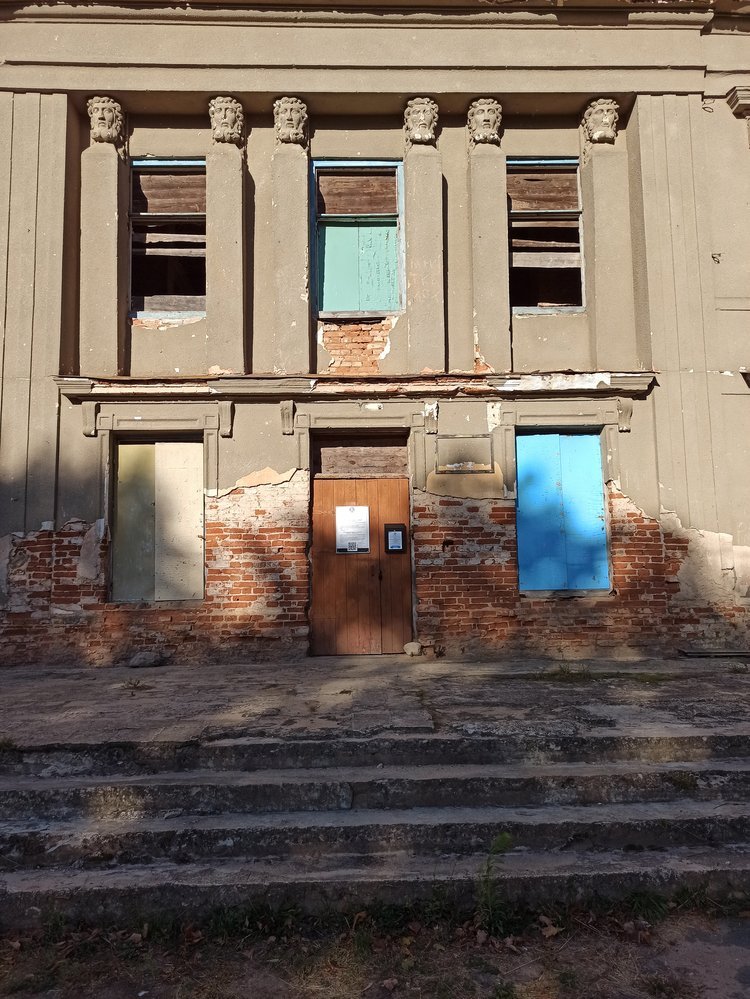
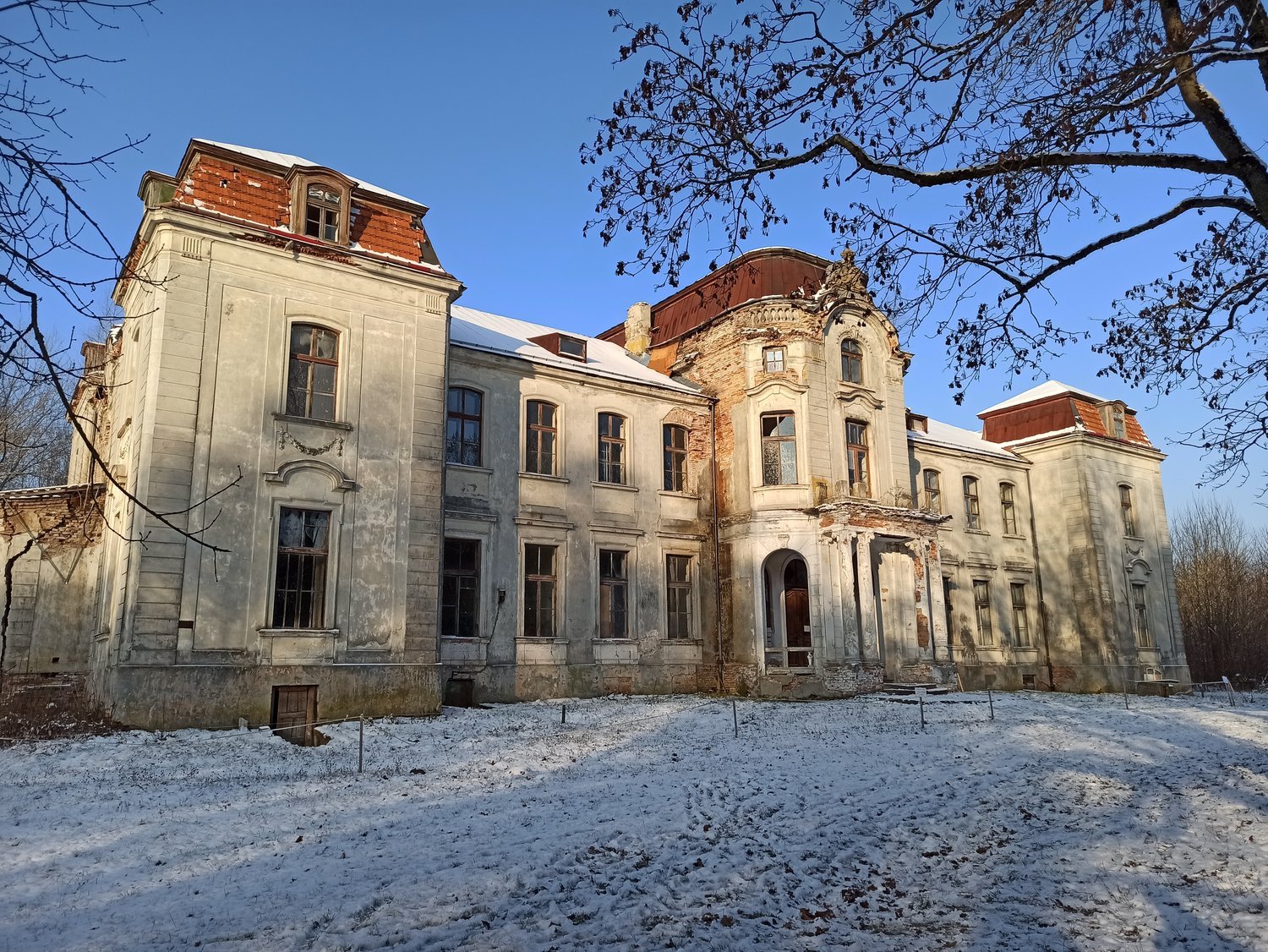
The Yalenskiy manor and park complex in Tucha (Kletsk rayon) was first sold to an investor in 2011. Restoration was not undertaken, leading to deterioration of the manor. In 2021, the manor was put up for sale again. It was bought by an individual entrepreneur who promised to turn it into a recreation center. As of 2022, works had not commenced there. Similarly, the privatized Makrytsky manor in the village of Vysokaye (Orsha rayon) is declining.
Nor is any work underway to restore the Chatviarrtinsky manor in Zhaludok (Shchuchin rayon), despite the owner charging an entrance fee to the complex.
Purchase of a manor into private ownership is frequently associated with the risk of financial losses, which negatively affects the investors’ interest. Thus, the Umiastousky manor in Zhamyslaul was bought from a local collective farm in 2008. However, violations were later uncovered by the prosecutor’s office, leading to the confiscation of the manor. In 2017, the manor found a new owner, who only managed to repair the fire-damaged roof of the manor house in 2021.
As a result of the socio-political changes in Belarus following the 2020 presidential elections, a court decision terminated the contract from 2013 with an investor who was restoring the Bokhvitz manor in the village of Padarosk (Vaukavysk rayon). These changes also forced the writer Andrus Horvat, who worked on restoration of the Horvat manor and park complex in Naroulya (Naroulya rayon) to leave.
Nevertheless, some manor and park complex restoration projects run by private investors are still in progress. Thus, restoration is underway in the territory of the Bisheusky manor in Lyntupy (Pastavy rayon). The owner plans to develop the manor’s territory as a weekend recreation complex. Part of the complex will be allocated for wellness and beauty treatments: massage, solarium, and a spa center. The palace itself is expected to house a banquet hall with 80-100 seats, a café, several premium hotel rooms, and a conference room.
In 2023, the first stage of the Valovichi manor and park complex, restored by a private investor, opened in the village of Sviatsk (Hrodna rayon).
Part of the restoration projects for manor and park complexes not only revives heritage sites but also raises public awareness about the challenges of preserving them.
A notable example of promoting the preservation of manor and park complexes is restoration of the Radziwill Palace in the village of Palanechka (Baranavichy rayon). There have been attempts to sell the palace since 2013. The first investor failed to repay the debts. As a result, the facility was confiscated by the state in 2016. The complex was bought by a new owner in 2020. Social media accounts for the palace restoration project were created, and efforts to promote them and raise charitable funds were launched. To support this effort, the owner launched a campaign called «Coffee for a Castle.» The idea was to encourage people to donate sums equivalent to the price of a cup of coffee. With the help of social networks, volunteer activity was organized, clean-up days were held several times. To integrate the palace and park complex into cultural life, the site hosted exhibitions, historical dance workshops, running events, concerts, festivals, tastings, and guided tours.
Activities held to raise funds and restore the palace in Palanechka are important as an example of participatory practices, as well as inclusion of the local community and volunteers in the restoration process. Participation enables the community to learn more about the heritage and understand the importance of its preservation.
Privatization of the Siahenі manor and park complex in the village of Kraski (Vaukavysk rayon) shows a reverse example. Thus, it was sold to a Russian entrepreneur in 2009. Repair and restoration work, along with landscaping of the park, were carried out on the manor’s grounds. However, the complex is entirely fenced off and, with few exceptions, remains inaccessible to tourists due to its private ownership. Consequently, the manor was completely excluded from the region’s cultural context.
The Church: A Rising Danger
During the period of independence, manor and park complexes began transitioning not only into private ownership but also into the hands of the church. From one perspective, this allows abandoned manors to be used for the benefit of the local community. Thus, one part of the Liubetsky manor house in the village of Mezhava (Orsha rayon) now hosts the St. Seraphim of Sarov Orthodox church, which can be visited upon prior agreement. The manor did not undergo significant repairs. A cross and bells were installed on the balcony, and some of the window openings were covered with blue panels.
A similar situation occurs with the Ivanousky manor house in the village of Halavichpole (Shchuchyn rayon), now functioning as a Catholic chapel. No repairs were made, and the building suffered significant alterations and degradation during the Soviet period. The manor’s interiors, adapted for worship, can be viewed on holidays or upon prior agreement.





However, the church’s activities at the Aznabishyny manor and park complex in the village of Masty Pravyia (Masty rayon) present a completely different example. In 2013, the manor was transferred to the Hrodna diocese of the Belarusian Orthodox Church. The former manor accommodated an Orthodox youth center and the church of the Icon of the Mother of God «Joy to All Who Mourn.» Here renovation led to the loss of some decorative elements and alteration of the roof structure over the round veranda. Furthermore, plastic windows were installed, and elements uncharacteristic of manor architecture were added. In addition to that, old-age trees were cut down during the works.
Cultural Landscape and Its Preservation
During the Soviet period, the territory of manor and park complexes was generally not considered valuable or worth preserving, with few exceptions. At best, manor parks turned into public parks open for everyone and were hardly cared for. At worst, the territory was radically altered: new buildings were erected, old trees were cut down, and industrial or agricultural enterprises were established. For example, the cultural landscape of the Sventazhetsky manor and park complex in the village of Malinaushchyna (Maladzechna rayon) changed completely in the post-war period. Today, the remains of the farmyard and the territory of the surviving chapel-tomb are occupied by the Malinovschiznensky Distillery – “AKVADIV”.
Reconstruction and restoration of manor parklands occurred through large restoration projects (such as Mir and Niasvizh), with international support (as in Varapayeva, Pastavy rayon), or in urban environments (like Svislach and Naroulya). Otherwise, parkland was either neglected, or its landscaping was limited to seasonal mowing.
In fact, the Soviet approach that overlooks the value of the cultural landscape of the manor and park complexes still applies. Next to the Voranau manor in the village of Voranauka (Voranauka rayon), a residential apartment building was constructed, and in 2012, the park alley was entirely cut down. The area in front of the manor's main facade turned into a parking lot and a playground. A similar situation developed at the "Zherna" manor in the village of Aliaksaushchyna (Zelva rayon), where a private residential block was constructed just a few meters from the well-preserved manor.
Another recent trend in managing manor cultural landscapes is a form of disneyfication. This happened in the course of creation of the "Sula" and "Dukory Manor" tourist complexes. The Lensky manor and park complex in the village of Sula (Stoubtsy rayon) is now actively used for tourism, hosting the Sula Interactive History Park Museum on its grounds. The site's creators restored the manor house, the chapel-tomb, and outbuildings. The complex helps to promote and bring attention to the Lensky family's heritage and the history of Belarus. While shaping the territory's outlook, the approach focused on adding as many new sites as possible. A similar approach was chosen for the Oshtarp manor in Dukora (Pukhavichi rayon).
The Sulistrousky manor and park complex in the village of Kamarova (Myadziel rayon) received a completely different approach. Outbuildings and the manor territory now host the Center for Development of Rural Tourism, which includes a cafe, a shop, a business incubator, a bakery, and a cheese factory. Although the manor building itself is not in use, the parkland is kept in excellent condition. The vegetation is trimmed, paths are laid, benches and urns are installed, gazebos and recreation areas are set up, and the water system is restored, including cleaned reservoirs, and reinforced dam and bridge. Without museumification of the manor building (which is now empty), the park has become a popular spot for individual tourists and a recreation area for organized groups.
Conclusions
The path of Belarus’s manor and park complexes since the country gained independence has been neither straightforward nor simple. Alongside with implementation of major restoration projects in some manor and park complexes, others are deliberately demolished or lost by accident. Restored manors become important tourist sites, showcasing the state policy for the preservation of historical and cultural heritage. However, behind this facade lie hundreds of sites that are neither registered nor protected or conserved by the state, and are often neglected and looted.
Positive examples of using manor and park complexes functionally to benefit the local community exist alongside attempts at privatization, which completely disconnect these sites from their regional cultural context.
Private initiatives to restore manors — those that engage the public, educate them, and revive cultural life in abandoned buildings — face site confiscations and pressure on activists.
Changes in the country’s socio-political life bring to the forefront the following trends in the fate of Belarusian manor and park complexes:
termination of international financial assistance and cooperation in this field;
exclusion of undesirable or uncomfortable legacies from the official discourse and shifting focus to other, more acceptable projects;
lack of public control and mechanisms of influencing the decision-making processes on the conservation of manor and park complexes.
Approaches to working with manor and park complexes remain inconsistent: in some cases, those complexes are restored and protected by the state, while in others they degrade severely.
The diverse and rich heritage of manor and park complexes of Belarus can certainly become a resource for development of tourism, as well as local cultural and economic initiatives. However, we believe that full utilization of the cultural and natural potential of most complexes is still to come.




